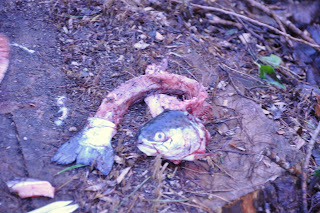Myself and Gary had the chance for a morning dander last Wednesday around Clements wood outside Larne and there was a lot of evidence Spring is just around the corner. I had just purchased a new camera so i got the chance to try it out.
Pussy Willow (salix discolor) a true sign spring is close.
Catkins and new buds starting to burst on Hazel (corylus)
Fresh new growth on Black pine (Pinus Nigra.)
The brook is in full swing water crystal clear even after the recent rain.
Pendunculate or English Oak (Quercus robur) showing new buds through the old leaves.
Some signs of active wild life a chance to practice my wildlife photography!
Steady does it not a sound.
Typical feeding pattern of the 'Garyisius Minnissbis'
Spotted and its attacking!
Plentiful supply of thin Willow wands for pruning.
Pignut (Conopodium Majus) Showing the leaf as it emerges from the ground. Note the white stalk which is very delicate and needs careful handling when diging or it will break and the tasty tuber will be lost.
Close up of the leaf.
Leaf stalks and tuber in one.
Tasty tuber after cleaning.
Lesser Celendine (Ranunculas ficaria) at this stage the leaves can be eaten and have a high vit. C content. Underground the tubers look like anal piles hence the old name for this plant Pilewort. The tubers can be steamed boiled or roasted like potatoes but must always be cooked before eating.









































